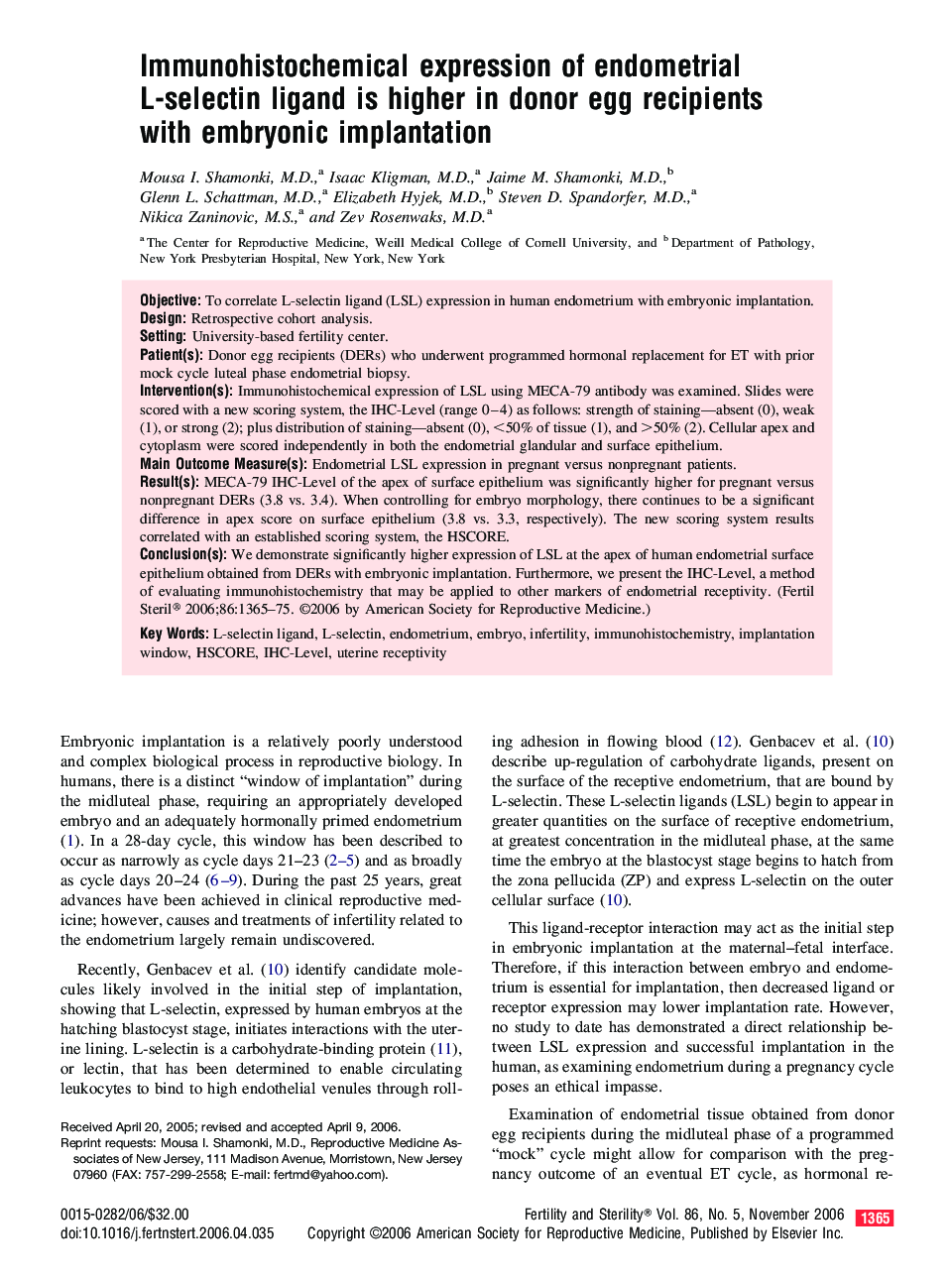| Article ID | Journal | Published Year | Pages | File Type |
|---|---|---|---|---|
| 3940351 | Fertility and Sterility | 2006 | 11 Pages |
ObjectiveTo correlate L-selectin ligand (LSL) expression in human endometrium with embryonic implantation.DesignRetrospective cohort analysis.SettingUniversity-based fertility center.Patient(s)Donor egg recipients (DERs) who underwent programmed hormonal replacement for ET with prior mock cycle luteal phase endometrial biopsy.Intervention(s)Immunohistochemical expression of LSL using MECA-79 antibody was examined. Slides were scored with a new scoring system, the IHC-Level (range 0–4) as follows: strength of staining—absent (0), weak (1), or strong (2); plus distribution of staining—absent (0), <50% of tissue (1), and >50% (2). Cellular apex and cytoplasm were scored independently in both the endometrial glandular and surface epithelium.Main Outcome Measure(s)Endometrial LSL expression in pregnant versus nonpregnant patients.Result(s)MECA-79 IHC-Level of the apex of surface epithelium was significantly higher for pregnant versus nonpregnant DERs (3.8 vs. 3.4). When controlling for embryo morphology, there continues to be a significant difference in apex score on surface epithelium (3.8 vs. 3.3, respectively). The new scoring system results correlated with an established scoring system, the HSCORE.Conclusion(s)We demonstrate significantly higher expression of LSL at the apex of human endometrial surface epithelium obtained from DERs with embryonic implantation. Furthermore, we present the IHC-Level, a method of evaluating immunohistochemistry that may be applied to other markers of endometrial receptivity.
